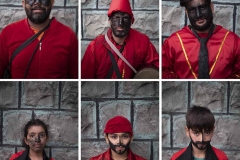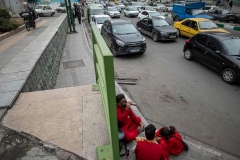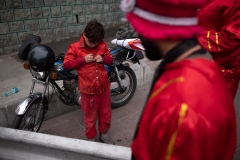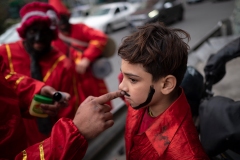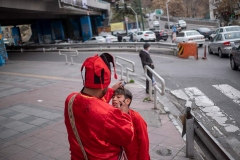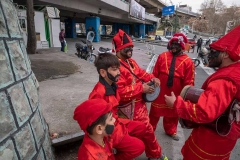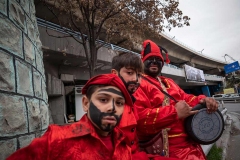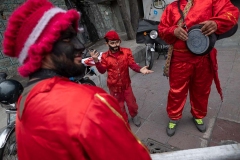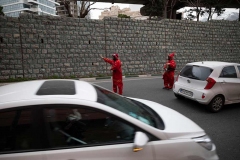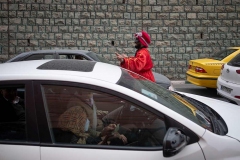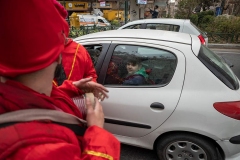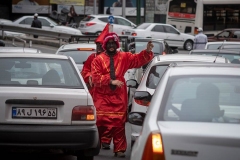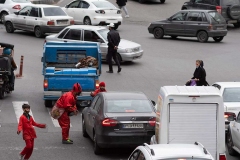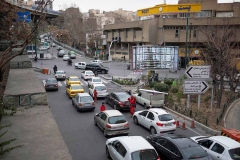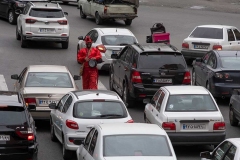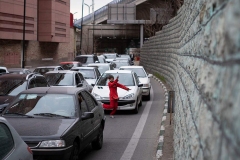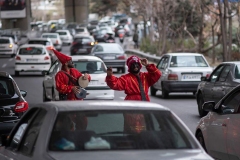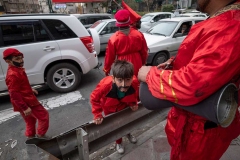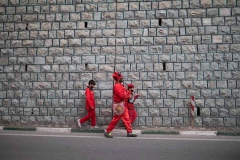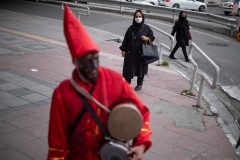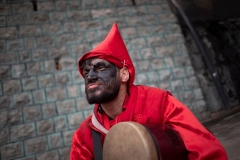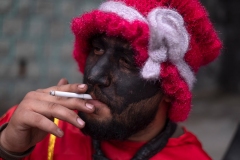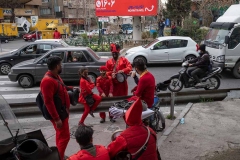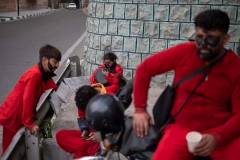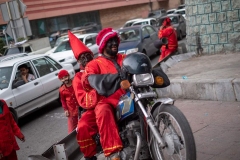Hajji Firuz
Hajji Firuz is a fictional character in Iranian folklore who appears in the streets by the beginning of Nowruz. His face is covered in soot, and he is clad in bright red clothes. He dances through the streets while singing and playing music. In the traditional songs, he introduces himself as a serf trying to cheer people whom he refers to as his lords. The exact history of Hajji Firuz is unknown. According to some sources, Hajji Firuz is based on a tradition called Mir Nowruzi. Mir Nowruz was a comical figure chosen to rule the municipality for "the last five days of the year" (Panje). The temporary "five-day king" (Šāh e Panj Ruze) would often parade the city with a group of singers and dancers for the Nowruz celebrations. Mehrdad Bahar, a prominent Persian historian, opined in 1983 that the figure of Hajji Firuz may be derived from ceremonies and legends connected to the epic of Prince Siavash, which are in turn derived from those associated with the Mesopotamian deity of agriculture and flocks, Tammuz (Sumerian Dumuzi). Later, it was claimed that the blackened face of Hajji Firuz symbolizes his returning from the world of the dead, his red clothing is the sign of the blood of Siavash and the coming to life of the sacrificed deity, while his joviality is the jubilation of rebirth, typical of those who bring rejuvenation and blessing along with themselves. Bahar speculates that the name Siyāwaxš might mean 'black man' or 'dark-faced man' and suggests that the term black in the name may be a reference either to the blackening of the faces of the participants in the aforementioned Mesopotamian ceremonies or to the black masks that they wore for the festivities. Source: Wikipedia





